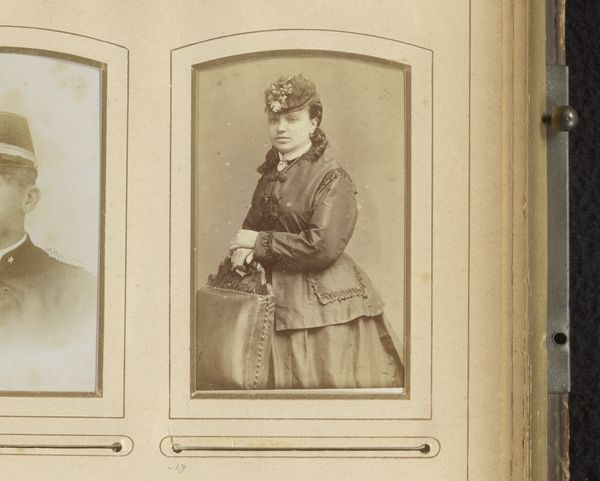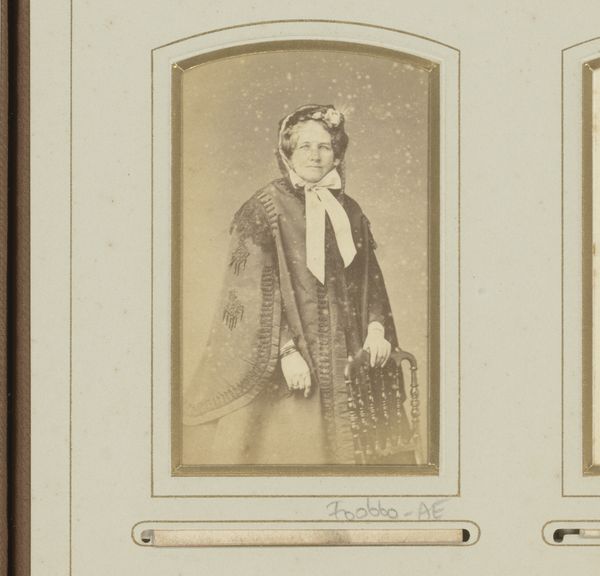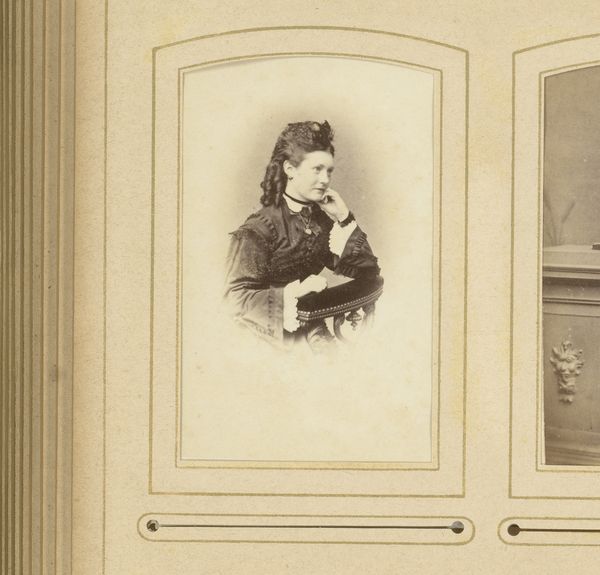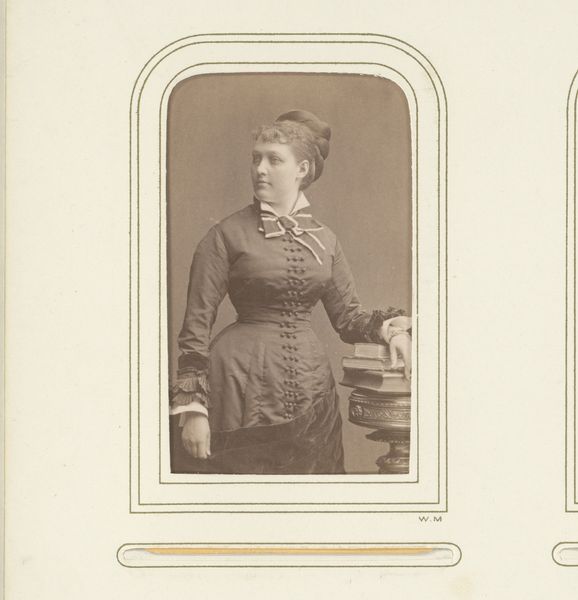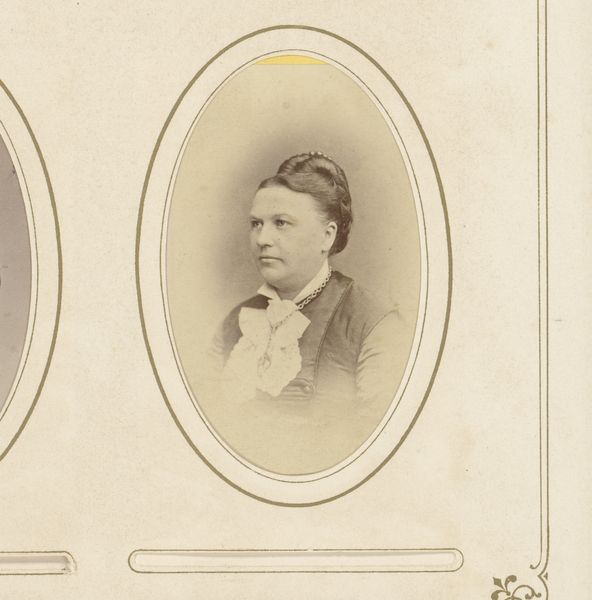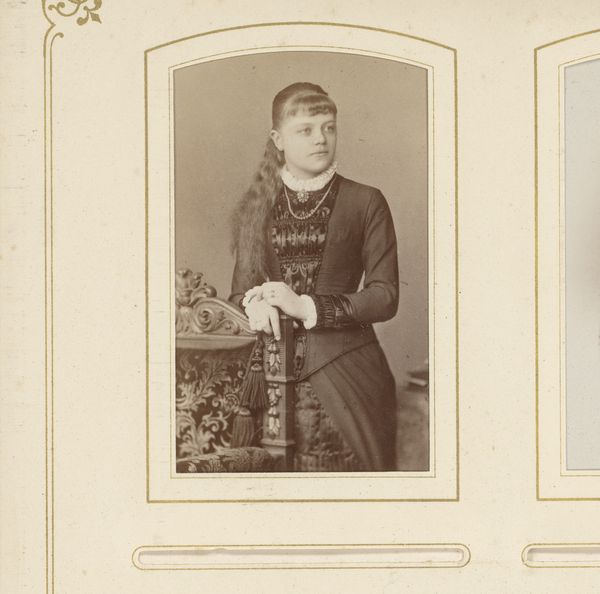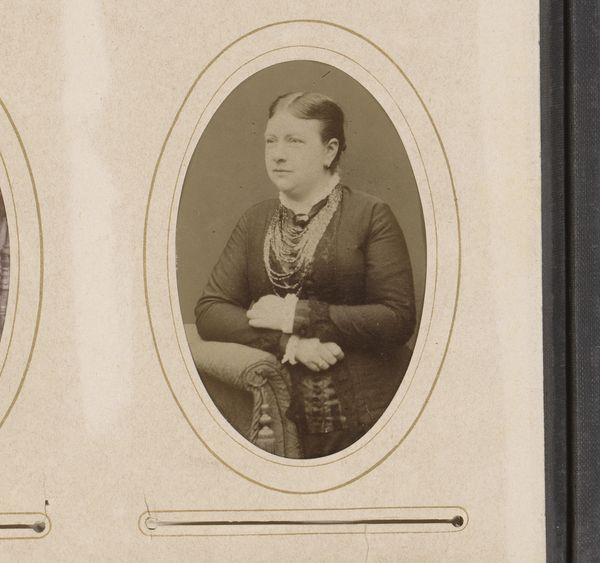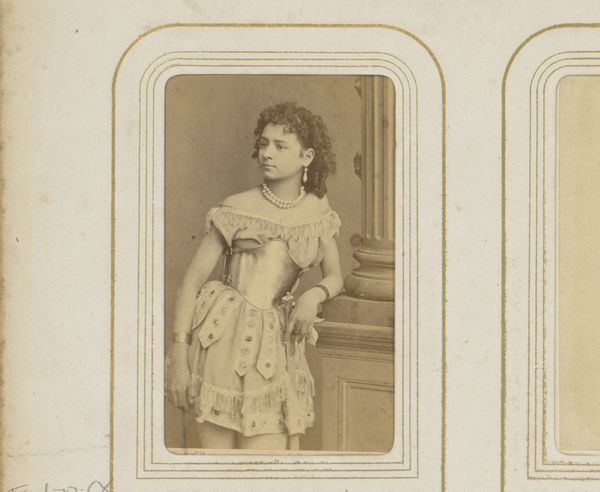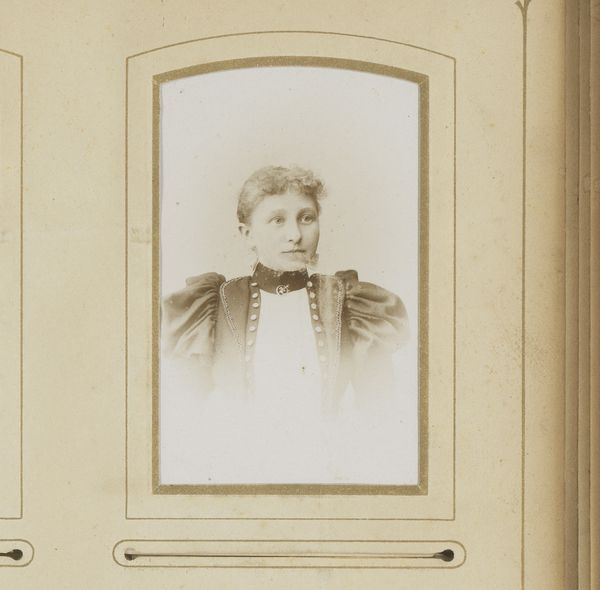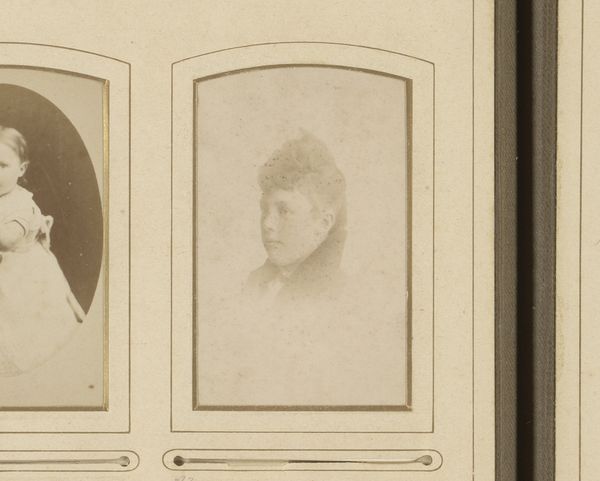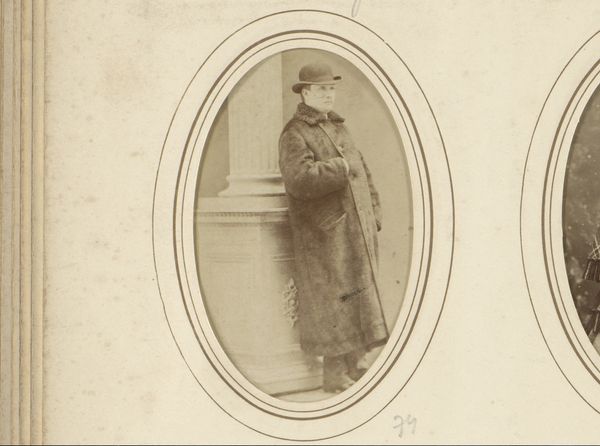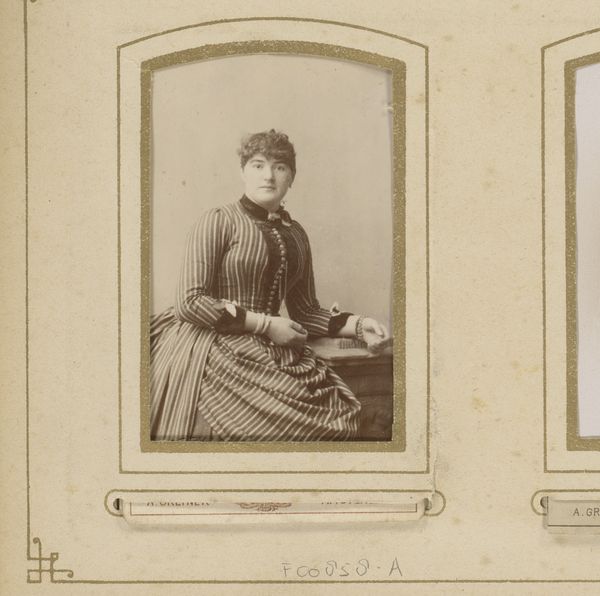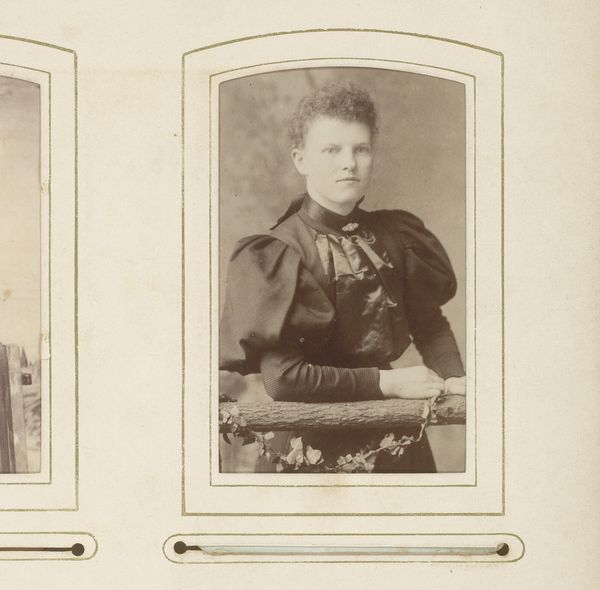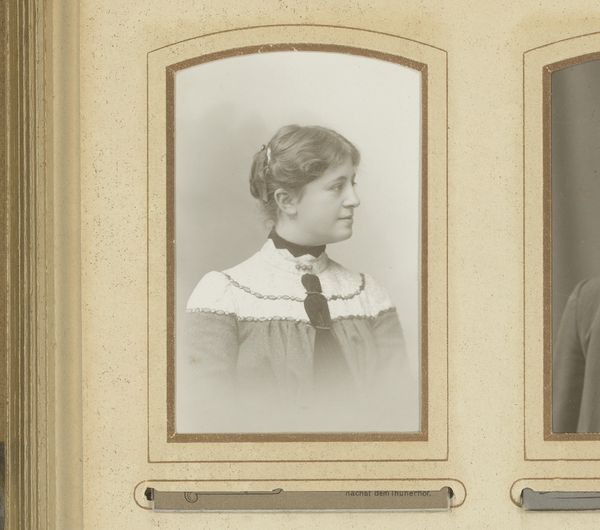
Portret van een jonge vrouw, aangeduid als tante Ria 1880 - 1900
0:00
0:00
photography
#
portrait
#
photography
#
genre-painting
Dimensions: height 86 mm, width 53 mm
Copyright: Rijks Museum: Open Domain
Curator: Adolphe Zimmermans captures a poignant image dating from 1880 to 1900 in his work, "Portret van een jonge vrouw, aangeduid als tante Ria," a portrait photograph now held at the Rijksmuseum. What springs to mind for you, as you observe this piece? Editor: Ah, what a reflective mood! I’m struck by the intimate scale and soft sepia tones; it's as if we’re peeking into a quiet, personal moment frozen in time. The lady's expression suggests pensiveness, maybe a touch of melancholy. Curator: The semiotics of such formal portraiture during this period are, of course, very telling. Note the careful arrangement of elements – the textured velvet of her garment contrasting with the smoothness of her skin, the ornate fan she holds, and the architectural curve of the chair echoing the curves of her pose. Each element contributes to the overall composition. Editor: Right, like the whole ensemble is deliberately crafted. I imagine the lace at her wrists must tickle! It looks posed, formal – very of-the-time – yet the gentleness of her touch on her cheek softens it. Do you think there is more narrative happening in these quieter works? Curator: There is a distinct dialectic occurring. The formal, almost painterly quality given to a nascent medium reveals a tension, even an attempt to legitimize photography within the established hierarchy of the fine arts. Notice how the composition aims at classical beauty—soft lighting, graceful lines. But the use of photography itself challenges the notions that underpinned the art establishment. Editor: Beautifully put! For me, it sparks the idea of duality in our self-presentation; we build up layers of persona with lace, velvet, and controlled gestures, and the raw moment is captured underneath. Like finding a true emotion despite your best intentions. It's an early, almost naive capture of identity. Curator: Indeed, that duality you speak of reflects the larger cultural shift of the time—between tradition and modernity, reserve and expressiveness, and how those tensions manifested in art and society. A fascinating moment caught with thoughtful deliberation by Zimmermans. Editor: Definitely! It’s made me pause and consider all that we convey, even in supposedly still, posed moments. Art imitating a fragment of lived time.
Comments
No comments
Be the first to comment and join the conversation on the ultimate creative platform.
